South Australian-born Supercar star Nick Percat’s link with Holden runs deeper than the car that made him a Bathurst 1000 champion
AS the doors close on the Holden factory, in Elizabeth, this Friday for many, it will be the final chapter of an amazing story. This is the story of one family’s enduring link to this Aussie motoring icon.
SA News
Don't miss out on the headlines from SA News. Followed categories will be added to My News.
THE Holden spirit has always run through Nick Percat’s veins.
Percat, in 2011 became the first and only South Australian-born race car driver to win Australia’s most prestigious motor race, Bathurst 1000. He did it in a Holden.
In a country where television advertisements used to proudly proclaim “we love football, meat pies, kangaroos and Holden cars” it is no surprise Percat was proud to be driving a Holden.
But very few motorsport fans would truly appreciate how intristinctly linked to the iconic Holden brand the Percat family was.
Nick, just 23 when he won Bathurst, is the fourth generation of his family with an indelible link to the iconic Australian brand.
But if it were not for a World War, communism, a South Australian Premier keen to industrialise the state and a tardy Canadian immigration office the Percats may never had spent decades working for the Holden name.
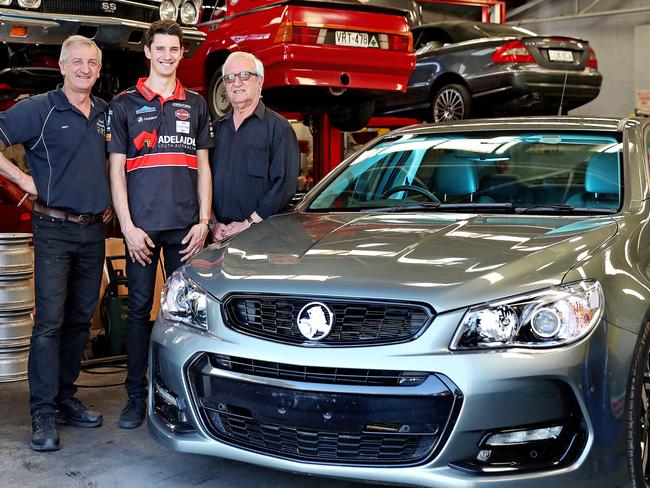
On Friday the door will close on the Holden factory in Elizabeth for the final time.
For more than 60 years the factory has provided jobs for tens of thousands of South Australians.
Elizabeth had been farming area before being transformed into a satellite city driven by a public housing development program initiated by the South Australian Housing Trust.
The region attracted working-class families with dreams of raising their families off the back of reliable work at factories in the region.
Holden was a huge drawcard as an iconic brand with a reputation of providing a great place to work.
A job at Holden became a family affair for many boys following in their father’s and grandfather’s footsteps.
One such family was the Percats.
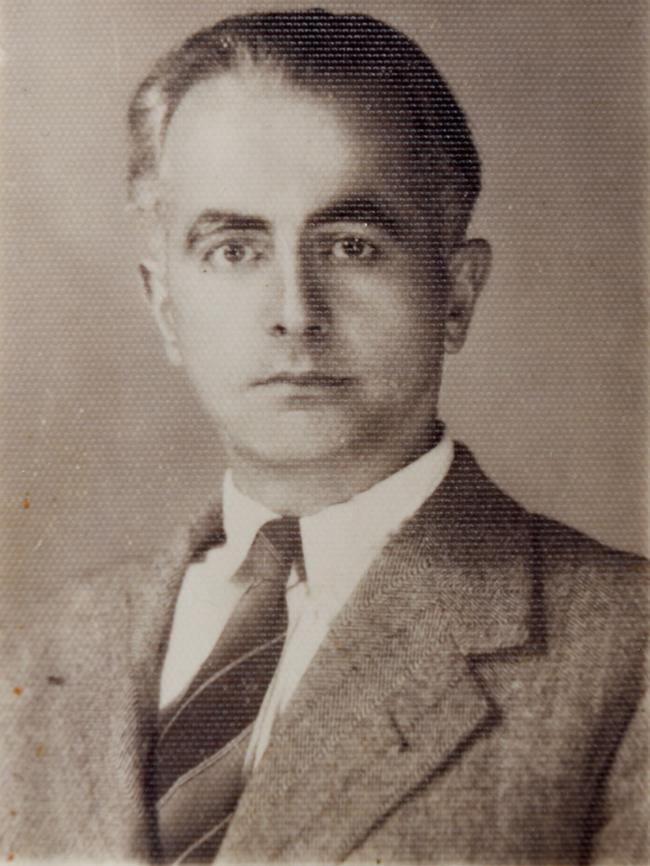
Three generations of the family worked at the Elizabeth factory.
And a fourth, young Nick, has become synonymous with the Holden brand after winning Australia’s most iconic motorsport race during his first attempt in 2011 — and almost pulling off the same feat just last weekend.
In some respects the story of the Percats is one that will be familiar to many generations of families who have worked for Holden — the company with heritage the stretches back to just 20 years after the first colonists arrived in the state in 1836.
But it was in fact just dumb luck that landed the family in South Australia in the first place.
In 1949 Paolo Percat, at age 43, and his wife Antonia, 35, fled their homeland of Istria, then under Italian rule, with their four children, Marcella, 16, Nick, 15, Nela, 12, and Elzira, 10.
After the end of World War II, Istria was ceded to Yugoslavia and the Percats joined thousands of Istrian families fleeing the pro-communist rule.
Paolo, who was a farmer in his homeland, turned to bricklaying to make a living when the family arrived at Bologna, Italy.
“We were refugees because of the war,” Paolo and Antonia’s second born, Nick, told the Sunday Mail.
“But Italy was devastated after the war and Dad just wanted to get away.
“We planned to go to Canada, and then something happened, immigration was closed because of Christmas, and they said, ‘well, you can go to Australia’.”
Nick Snr was 15 when he arrived in Melbourne, Australia, on January 14, 1950, after a 31-day journey at sea.
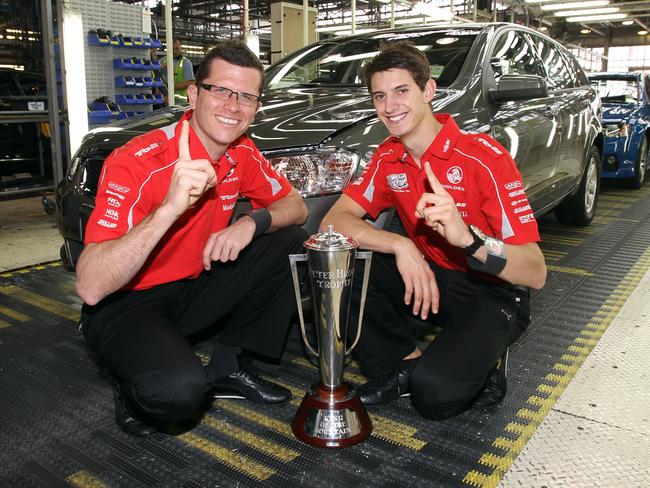
He started working immediately in country Victoria in Mildura, retreading tyres at a local garage.
His father, who still needed the use of a cane after a workplace accident in Italy, picked grapes.
Seven months later, the family moved to a migrant camp in Mallalla — about 60 kilometres north of Adelaide.
Mallalla Racetrack is today regarded as the home of motorsport in South Australia and a place that helped forge the career of Nick Snr’s grandson Nick.
At the time it was home to an airfield and, right next door, a migrant camp.
Nick Snr, his three sisters and his mother stayed at the camp while Paolo secured a job at the Chrysler factory in Woodvile and saved enough money to buy a block in Albert Park in 1953.
Paolo built a steel shed on the block so he could finally move his family into the city with him in 1954.
“He picked us up on a steel backed truck and all six of us lived in the steel shed. It was bloody awful in the summer,” Nick Percat said.
Nick Snr started working for Holden, at Woodville, in 1955. His father Paoloa followed in his footsteps in 1957.
He was 50-years-old at the time and worked at the Woodville factory for the next 15 years until he retired.
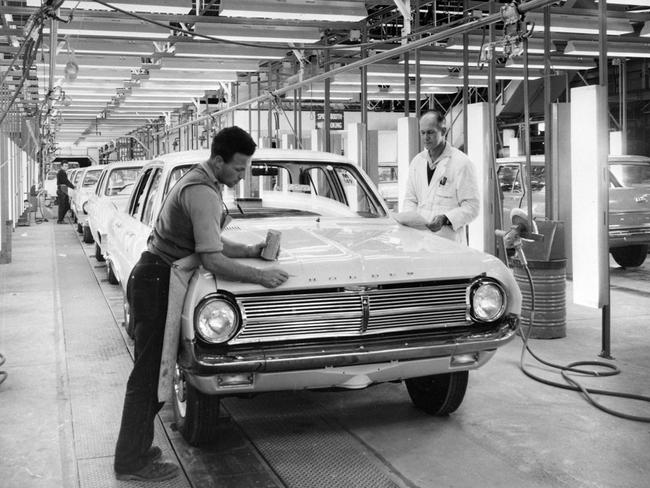
“I was 20. I started as a packer at Port Road, Woodville. I was placing car parts in big boxes to go to New Zealand or South Africa,” Nick Snr said.
“I loved it. It was a big place. There would have been about three or four thousand people there.”
At that stage, Holden at Woodville operated what was known as the trim shop and welded together the car chassis before sending them further afield to Port Adelaide where engines were placed in the vehicles.
“I saw the forklift drivers driving around, so I wanted to be a forklift driver,” he said.
Nick’s leading hand said he would never become a forklift driver, but the determined 20-year-old set out to prove him wrong.
“I came in 10 minutes early every day and I would jump on the forklift, spinning around, doing different jobs. Then one day a driver did not turn up. I said ‘let me have a go, let me show you I can drive’. I was the forklift driver from then on.”
In 1959 Nick Percat became a crane driver in Elizabeth, before being made leading hand of spare parts.
He finished in 1980 after 25 years and with a gold watch.
“I loved it. I did everything there. I was an interpreter, leading hand, shop steward, I was head of the chassis,” he said.
Every week there was about four hours’ overtime and a nice bonus.
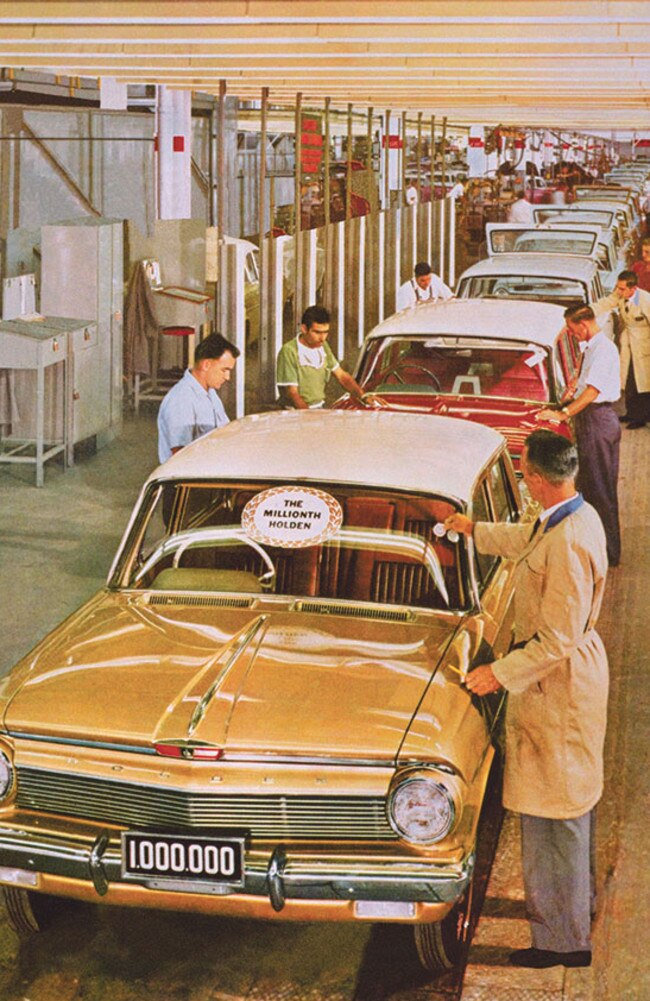
“They would sell cars to employees, with the longest-serving getting first pick,” he said.
“I got to pick out a brand new 1972 yellow Monaro. It was beautiful.”
“Everybody was upset, because they all put their names down, but I got it.”
The ballooning price of petrol in the 1980s saw him sell the Monaro for $2200 — $1500 less than its retail price at the time.
Nick Snr said Holden was a great place for families.
“There used to be a Christmas party for the kids every year. It was beautiful. They used to have Father Christmas and the works. The kids used to look forward to it every year.”
Nick is father to Marc, and daughters Debbie and Italia.
The children grew up in an old public housing property, Elizabeth Vale, after Nick Snr laid down a 50-pound deposit for the 200-poundproperty in 1962.
The house was a five-minute walk from Holden.
Marc told the Sunday Mail he was constantly jumping fences to get into the factory on weekends as a kid.
“During school holidays I would get past security and wander the plant,” he said.
“At lunchtime, Dad would steal the forklift come to our street and bring cakes from the canteen.”
The mechanic, who now runs a successful workshop in Darlington, in Adelaide’s south, specialising in BMW, Mercedes and Porsche repairs, said he felt he was destined to follow in his father’s footsteps.
Nick Snr said: “He tried to get in on an apprenticeship, but the apprentices were closed.”
“So I said ‘see if you can get a job there, and then see what happens’. He came in got a job on an assembly line putting heaters in cars.”
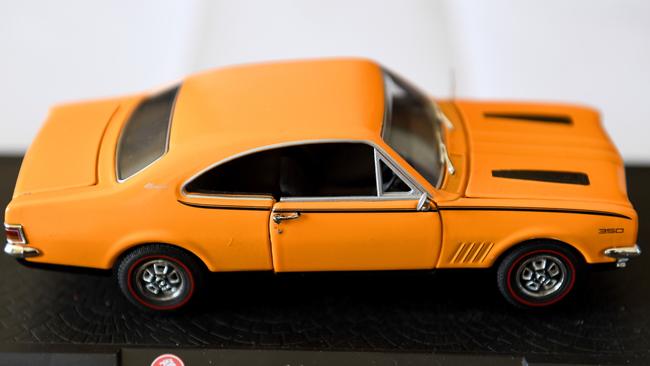
Marc secured a “prestigious” apprenticeship, in 1976, after a year on the production line.
“A normal apprentice was earning something like $45 a week as a first year — we were on $85,” Marc said.
“At trade school you could look in the car park and all the Holden apprentices had fancy new cars.
“I tried to get in for two lots of intakes. They said they had ‘fitting and turning’ but I wanted to be a motor mechanic.”
“I was working on the production line for eight or nine months, earning adult wages. I bought my Monaro, and thought ‘this is pretty good.’ and then put in another application as an apprentice from the trim assembly where I was working.”
The fact he was already worked in the factory worked in his favour.
“At the apprentice training centre you could eat your lunch off the floor — it was just spotless. It had all the best equipment. And you learned everything.”
Marc learnt his new trade for two years at Holden’s Woodville apprenticeship school before moving back to Elizabeth where he eventually finished his stint with Holden in 1983.
Marc said Holden employed people from all walks of life including his foreman — a Lithuanian who had fled Hitler during World War II.
“When the Vietnamese came, everyone hated them because they were all hard workers,” Marc said.
“The bosses used to put them at the start of the production line. The poms were the slackest, they would be doing nothing, and the Aussies just went along for the ride.”
He said as a tradesman, mechanic, he had a pretty easy life.
“As long as the machinery was not breaking down you did not have to do anything,” he said.
Those in the know knew were to go to escape work — the scrap tunnels below the factory that that an underground city.
In the late 1970s, Marc got to know Peter Brock and was part of a team which built secret car bodies for the motor racing legend.
“It was just the Holden Racing team,” he said. “They had a special room called the ‘pilot room’ that was doing the Bathurst cars. They were not what everybody else was racing.”
Marc Percat laughs about that experience — seemingly unaware of how envious thousands of motorsport fans would be of such access during the heyday of motorsport in Australia.
Those same fanatics would also struggle to believe where he had his lunch for years.
In the early 1970s Holden produced three Torana GTR-X prototypes, with a wedge-shaped fibreglass body featuring a hatchback rear access with the ability to reach a top speed of 210km/h.
The Torana GTR-X looked similar to iconic sports cars of the era such as the Maserati Khamsin, Ferrari 308 GT4 and Lotus Esprit.
One of the three prototypes, now sits proudly on display at Birdwood’s National Motor Museum.
“I used to sit and have my lunch in it for years. It was a prototype that never get to production. It was out of this world, but it just sat in our corner and no one ever cared about it.”
“There was a lot of prototypes that have now been lost the world.”
He said his son Nick was destined to become a racing driver after “growing up” in his Monaro, and sitting on his father’s lap driving from age three.
“It was always cars. And it was always Holden,” Marc said.
Nick Percat, who now has more than 100 Supercar races under his belt said driving for Holden Racing Team gave him great pride.
“The Percats have very strong links to the company — my father, my grandfather and great grandfather all worked for Holden,” Nick said.
“Growing up I was very well aware that they were involved in building Holdens by hand.
“Dad had a HQ Monaro since his teens, I used to sit in the garage and pretend I was driving it.”
“I was a massive Holden Racing Team fan.
“And the next thing I realised I was sitting in the grid at Bathurst — the greatest race in the country.”
Nick’s 2011 Bathurst win and 2016 come-from-behind win on his home track in Adelaide both came behind the wheel of a Holden Commodore.
“As a kid I could only dream of being in a Holden Racing Team vehicle — it was pretty surreal all the stars aligned.”
“It is pretty cool to have your name on the most successful brand in the country.”
It has been more than 20 years since Nick’s father Marc left Holden and he appears a little cynical when discussing Government promises made over the years to maintain both the Holden factory and car manufacturing in Australia.
The company announced this week’s closure in 2013 after years of debate and political point scoring about the amount of government money, both state and federal, invested in the car industry.
Bickering over levels of government support for the industry intensified ahead of Mitsubishi’s shutdown of its Adelaide plant in 2008, then reached frenzied levels in 2013 ahead of the announcement of Holden’s closure.
The political point scoring continues from both sides and various levels of government, but for the Percat family, it’s just all external noise which they won’t detract from the great memories and friends they made during their time at Holden.
“It was good time out there and there was lots of great people that we met,” he said.
Nick Snr echoes his son’s sentiment when asked about the doors closing on Friday.
“People will be very sad. It was a great place to work.”


